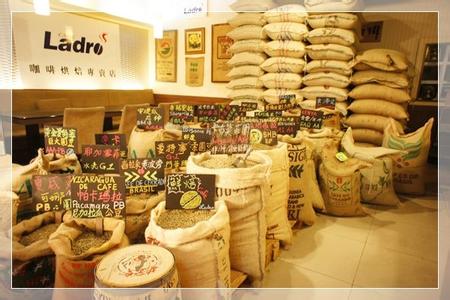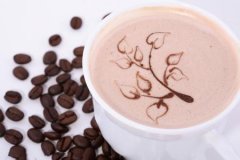The cultivated varieties of Coffee Tree: small seed and large seed

III. Cultivated varieties
(1) small seed species
(2) large seed species
Coffee belongs to Rubiaceae, Coffee belongs to perennial evergreen shrubs or small trees, there are about 90 species. At present, there are small grain species (Arabian species), medium grain species (Gaffra species) and large grain species (Liberian species) cultivated in Hainan.
(1) small seed species:
Also known as Arabian species, native to Ethiopia, evergreen shrubs. The plant is small, 4-5 meters high, the branches are slender, and the branches are corked earlier. The leaf is small and pointed, long oval, harder than the middle seed, and the ripple on the leaf margin is fine and obvious. The fruit is smaller, the ratio of fresh fruit to dried bean is 4.5 to 5, the exocarp of the seed is thick and tough, the seed coat is thick, and it is easy to separate from the kernel. The seeds are smaller, about 1700 to 2600 per jin of coffee beans, and the number of fruit per node is less, about 1215, but the number of branches is more, so under the condition of good management, the yield is not lower than that of medium seeds. Coffee powder tastes mellow and has good drinking quality. The plant is wind-resistant, drought-resistant and cold-resistant, but rarely infected with rust, high yield, strong flavor and strong irritation. Among them, the famous varieties are Romasta species, Quilong species, Ugandan species and Indonesian clones BP38, BP42, East Java high-yielding species Bgn300, Bgn124 and so on.
In recent years, eight high-yielding clones were selected from the seed trees of the Flavor Beverage Research Institute of the Chinese Academy of Tropical Agricultural Sciences. after years of experiments, it was proved that the yield was 3-4 times higher than that of the existing trees, and the yield of dried beans per mu was 150-200 kg. It can be popularized and planted in Hainan Province.
(3) large seed species:
Also known as Liberian species, evergreen trees. The plant is tall, more than 10 meters high, the branches are thick and hard, grow obliquely upward, and the branches cork the fastest. The leaf blade is oval or round, the leathery leaf surface is glossy, the leaf end is closed, and the leaf margin is not corrugated. The fruit is large, oblong, the skin and pulp are hard and thick, the navel is large and protruding. The ratio of fresh fruit to dried bean is about 7: 10. The seed shell is thick, hard and tough, the seed coat is close to the seed kernel, the bean grain is large, and there are about 1300 beans per jin. The ripe fruit is scarlet. The branches bear less fruit, and the number of fruits per node is about 5-6. The main root of this species is deep, drought-resistant, wind-resistant, cold-resistant, light-resistant, and most susceptible to rust. The yield per plant is high and the yield per unit area is low. Strong flavor and strong irritation.
The main varieties are Esselsa (also called Charley), which was introduced from Guangxi to Hainan in the 1970s. The fruit is vigorous, but the seed coat is thick and hard like a small seed, the ratio of fresh to dry is 5: 8, and the quality is strong and slightly bitter. It has deep roots, strong drought and cold tolerance, and is resistant to leaf rust and longicorn beetles.
Important Notice :
前街咖啡 FrontStreet Coffee has moved to new addredd:
FrontStreet Coffee Address: 315,Donghua East Road,GuangZhou
Tel:020 38364473
- Prev

Cultivation techniques and Biological habits of Coffee Tree
2. Biological habits (1) Botanical characteristics (2) growth and flowering habits (3) requirements for environmental conditions (1) Botanical characteristics 1. Root coffee root is a conic root system, its morphology, distribution and depth vary with agro-technical measures, soil conditions and varieties. In the case of a political party, there is a thick and short main root and many developed lateral roots. According to the observation in Hainan Island
- Next

Cultivation techniques of Coffee Tree Seedling Propagation and Establishment of Coffee Garden
(1) Seedling propagation Coffee seedling propagation can be divided into seed propagation and asexual reproduction. 1. Seed propagation (1) seed collection, seed washing and seed storage during the full ripening period of coffee (the full ripening period of medium-grain coffee in Hainan Island is from February to March, and that of small seed is from September to November). The fully ripe fruits are picked from strong and high-yielding mother trees to make seeds. After the fruit is harvested, peel and wash the seeds immediately. The method is to remove the fruit.
Related
- Beginners will see the "Coffee pull flower" guide!
- What is the difference between ice blog purified milk and ordinary milk coffee?
- Why is the Philippines the largest producer of crops in Liberia?
- For coffee extraction, should the fine powder be retained?
- How does extracted espresso fill pressed powder? How much strength does it take to press the powder?
- How to make jasmine cold extract coffee? Is the jasmine + latte good?
- Will this little toy really make the coffee taste better? How does Lily Drip affect coffee extraction?
- Will the action of slapping the filter cup also affect coffee extraction?
- What's the difference between powder-to-water ratio and powder-to-liquid ratio?
- What is the Ethiopian local species? What does it have to do with Heirloom native species?

